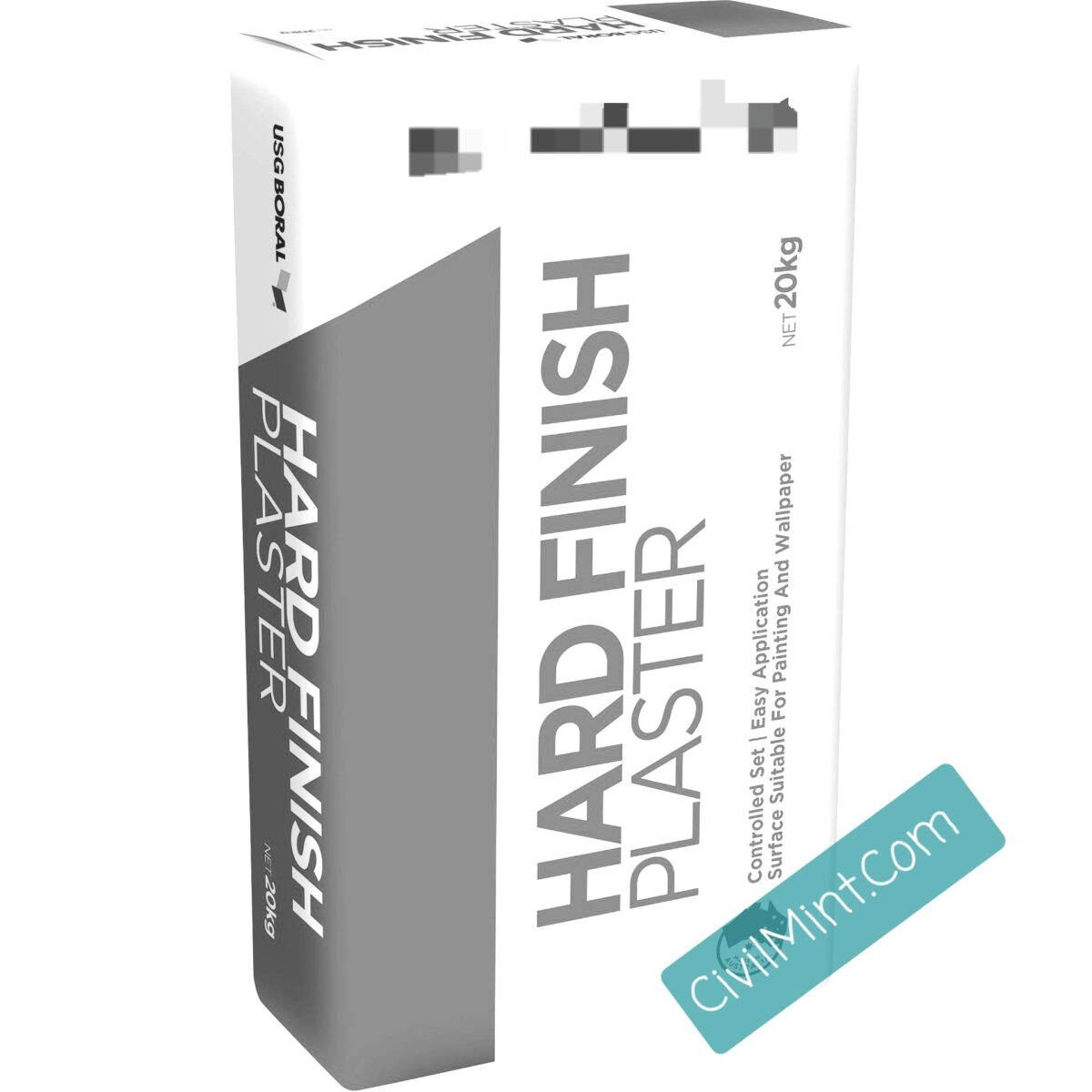Table of Contents
What Is Hard Finish Plaster?
Gypsum can be transformed into a hard finish plaster by burning it at a higher temperature than what is required for calcining cement plaster. Color of this cement is white.

This plaster can be made by treating the burnt gypsum with specific solutions like alum and Glauber’s salt (Na2SO4).
Although this type of plaster has a slow setting time, it eventually becomes very hard and durable. It can be polished to create a smooth surface, making it an excellent choice for interior walls.
It is not uncommon to create decorative effects on the walls of these plasters that imitate tiling, resulting in a visually pleasing finish.
This type of plaster is used as a skim coat plaster designed for use with lime to achieve a hard surface on walls and ceilings.
Types Of Hard Finish Plaster Cements
- Keen’s Cement
- Mack’s Cement
We will learn about these 2 types of hard finish plaster cements.
1. Keene’s cement
Keene’s cement is produced through the burning of high-quality rock gypsum at a temperature of 700°C, followed by cooling and the addition of 1% potassium and aluminum sulphates to speed up the setting process.
The resulting material is then ground until 90% or more of it passes through a No. 100 sieve. The final product is a pure white CaSO4 that is not affected by storage and can be retempered. Keene’s cement typically sets within 20 minutes to 6 hours and has a tensile strength of 3.16 N/mm2 after 7 days.
This type of cement is ideal for use as a finish plaster where increased resistance to moisture and surface abrasion is necessary.
2. Mack’s Cement
Mack’s cement is manufactured through a process involving the high-temperature burning of gypsum. To enhance its properties, around 0.4% of burnt Glauber’s salt or potassium sulphate is added.
This particular type of cement is reputed to produce a robust, compact, and long-lasting surface that can be effectively painted.
Advantages Of Hard Finish Plaster
- Applying it is a straightforward process.
- It has a flawless and even surface that is free from blemishes.
- Its setting can be controlled effectively.
- It requires minimal maintenance and is highly durable and resistant to abrasion.
- It is an ideal surface for decorating with either paint or wallpaper.
How To Apply Hard Finish Plaster
I have explained the step by step procedure for applying hard plaster.
- Begin by applying two coats of Hard Finish on a basecoated or keyed surface.
- Keep in mind that highly porous substrates may reduce the performance of the finish by causing cracking or reduced strength. If you’re dealing with porous or thirsty substrates, pre-wetting or pre-sealing of the surface may be necessary.
- Trowel the first coat lightly into the background to ensure that imperfections are filled.
- Apply the second coat using a straight wood float or trowel to achieve a true and level surface, and lay it down with the trowel.
- As the final set takes place, use a light flat trowelling action both vertically and horizontally to eliminate joints and provide a dense, smooth finish.
- Sand the surface lightly using 150, 180 or 220 grit paper, and then thoroughly clean all tools and equipment after use.
Faqs
Keene’s cement and Mack’s Cement.
